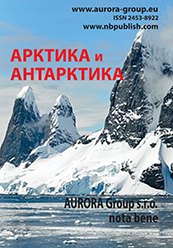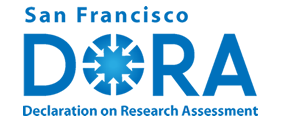Engineering Geology of Cold Plains and Mountain Regions
Reference:
Kachor, O.L., Ikramov, Z.L., Goryachev, I.N., Trusova, V.V., Parshin, A.V. (2025). On the rational methodology of GIS mapping of atmospheric pollution using the solid residue analysis method in the snow geochemical surveys (on the example of several areas of Irkutsk city, southern Baikal region). Arctic and Antarctica, 3, 1–22. https://doi.org/10.7256/2453-8922.2025.3.74200
Abstract:
The subject of the study is the analysis of the informativeness of various methods of mapping air pollution based on data obtained from snow geochemical studies. The shortcomings of conventional maps of chemical element concentrations in the solid residue of snow are discussed. A comparison is made between such maps and maps of daily pollutant deposition and seasonal concentrations, calculated taking into account the area and depth of test pits and the mass of the solid residue on filters. These cartographic materials are provided in addition to the previously conducted interpretation of the results of snow geochemical studies in one of the isolated areas of the city of Irkutsk. It is shown that cartographic materials reflecting the amounts of incoming pollutants per unit of time per unit area are more accurate in terms of assessing the ecological situation, as they allow for a more complete and correct characterization of the geoecological environment. The study is aimed at optimizing the fastest and cheapest methodology for snow geochemical research, based on X-ray fluorescence analysis of the solid phase of the snow cover. It has been demonstrated that geostatistical processing of the results of chemical-analytical studies is no less significant for obtaining reliably interpretable cartographic material than correctly conducted field and laboratory work. For the first time, the effects of geochemical anomaly inversion in areas with high dust loads are shown. Alongside this, based on previously obtained field data, new geoecological information has been created that allows for a more complete and qualitative visualization, and subsequently explains the nature of atmospheric pollution in one of the areas of the Baikal region with a complex nature of anthropogenic load, which has been a constant focus of attention for residents and environmental control authorities for years. General methodological conclusions allow for the finalization of the rapid assessment methodology for atmospheric pollution based on sampling seasonal snow and X-ray fluorescence analysis of snow dust, which, in the authors' opinion, should become one of the fundamental components of the system for assessing the background state and environmental monitoring of Arctic geosystems before and during their economic development, replacing traditional methods of instant monitoring of atmospheric air quality.
Keywords:
Irkutsk region, pollution mapping, snow cover, baseline condition assessment, heavy metals, environmental monitoring, solid residue, air pollution, air quality, specific accumulated load
 This work is licensed under a Creative Commons Attribution-NonCommercial 4.0 International License.
This work is licensed under a Creative Commons Attribution-NonCommercial 4.0 International License.











 © 1998 – 2025 Nota Bene. Publishing Technologies. NB-Media Ltd.
© 1998 – 2025 Nota Bene. Publishing Technologies. NB-Media Ltd.




